Innocent!
This post is a part of our series on Tom Horn – full collection of links at the bottom of the page.
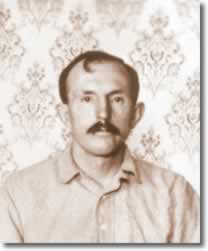
“Innocent!”
The word rang out like a gunshot in the crowded Cheyenne courtroom in September 1993, almost a hundred years after Tom Horn’s hanging for first-degree murder.
Light is fading on the early Twentieth Century, but even as that light dims it has become more apparent as time passes that Tom Horn was not the killer of Willie Nickell on July 18, 1901. It took a hundred years to exonerate him, if only in a mock trial at the same locale where he was convicted.
There were no witnesses to Willie’s murder. At the first trial — the only trial that really mattered — the prosecution had an alcohol-induced “confession,” weak circumstantial evidence and perjured testimony.
Tom Horn had been in the general area at the time of the murder. He had been at the neighboring Miller ranch, the homestead of a family who had been feuding with Willie Nickell’s, the previous morning. Other questionable scraps of circumstantial evidence were added to the mixture.
The linchpin for the prosecution was a questionable “confession” given by a drunken Tom Horn to a federal officer operating out of his jurisdiction, Joe LeFors. The conversation was recorded, but only in part, by a legal reporter who, together with a deputy sheriff, was a witness. LeFors had planted them for a single purpose – to “cinch” Tom Horn. LeFors himself acknowledged that he was operating under the instructions of the district attorney, Walter Stoll, whose own ambitions perhaps exceeded Joe LeFors’. His apparent obsession with winning a conviction gained him reelection to office.
The prosecution had, as well, a jury tainted with prejudice against Tom Horn’s employers and the power they represented and had misused. And it had an elected judge presiding, who himself had a clouded history, and whose rulings and instructions to the jury were anything but impartial. His ambitions led to election to a seat on the Wyoming Supreme Court.
Tom Horn had a legal defense team whose work in 1902 was described by the lawyer who represented him in the retrial as the “worst he had ever studied.” And Tom Horn’s own foolish statements in cross examination, driven by an ego that Walter Stoll played as if on a musical instrument, helped drive one of the nails into his own coffin.
The three shots that rang out in an early summer morning in 1901 near remote Iron Mountain, Wyoming were more than mere gunfire. They were, figuratively, the sound of a hammer driving final nails into the coffin of a Wyoming cattle business as it had existed for over thirty years.
Willie Nickell was the second fourteen-year-old Iron Mountain boy to die of gunshot wounds within a few months.
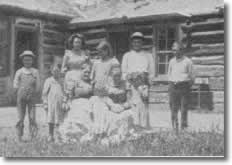

In the spring Frank Miller, son of hostile neighbor Jim Miller, had died when a shotgun in a spring wagon in which he and a younger sister were playing accidentally discharged. The sister, Maude, carried the buckshot and scars from her wounds the rest of her life. It was stated that Jim Miller placed the blame for Frank’s death solely on Willie Nickell’s father, and that he swore that if the law did not avenge the death, he would.
Willie Nickell had saddled his father’s horse at six thirty the morning of July 18, 1901. He was going to try to find a man to replace a sheepherder who was quitting his father’s employ. Kels, Willie’s father, had ordered Willie to find the man who had ridden through the area looking for work. The unwitting order led to Willie’s death.
Willie mounted the bay and headed from the family cabin northwest of Cheyenne toward wire gate three-quarters of a mile to the west. Reaching the gate, he dismounted, led the horse through and turned to loop the gate closed.
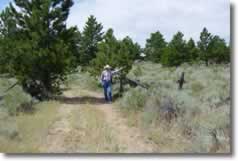
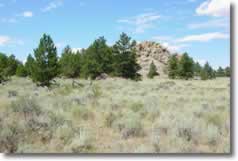
Three shots rang out. Two followed in quick succession, then a pause, and then another. Two reached their mark. They smashed into the boy’s left back, and exited. Blood sprayed on the gate, the ground and the post, a tree now lying today at the site. Willie stumbled sixty-five feet toward home before he dropped facedown on the rough granite gravel. Blood seeped from the exit wounds.
Someone, no doubt the killer, rolled Willie’s body over and pulled open his shirt.
The reverberations of that gunfire through the Wyoming hills signaled the beginning of a long search for Willie Nickell’s killer. And they marked perhaps the largest setback, one of several that began with the lynching of Ellen “Cattle Kate” Watson in 1888, for the so-called cattle barons’ and their fiefdoms. They, along with the industrial, railroad and mining barons, were unwilling players in the drama of economic and social changes marking an evolution in America from an agrarian to an industrial society.
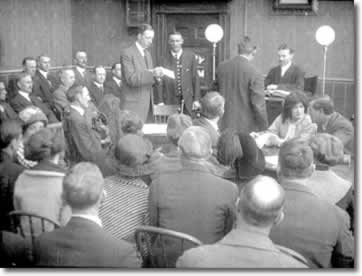
Two years, three months and two days after Willie Nickell’s assassination Tom Horn strangled to death in a hangman’s noose in the Laramie County jail on November 20, 1903. He would have been forty-three years old the next day.
Tom Horn’s execution may symbolically mark the passing of the Old West in Wyoming, poignantly described in the forward of Owen Wister’s The Virginian, written while Tom was in jail in 1902:
It is a vanished world…. A transition has followed the horseman of the plains; a shapeless state, a condition of men and manners unlovely as that bald moment in the year when winter is gone and spring not come, and the face of nature is ugly….
The controversy over whether Tom Horn “shot that kid… the best shot that I ever made and the dirtiest trick I ever done,” his so-called confession, trial and failed appeals still rages on in Wyoming almost a century later.
This essay was originally published on Chip Carlson’s personal website, which has since expired, and is re-published here as a way to preserve some of the content of this historical figure. If you would like to continue learning about Tom Horn, please explore the links below. If you’d like to read the complete story, and help to support the author, his book can be purchased here.
More about Tom Horn:
Tom Horn (main page)
The Tom Horn Story (summary)
